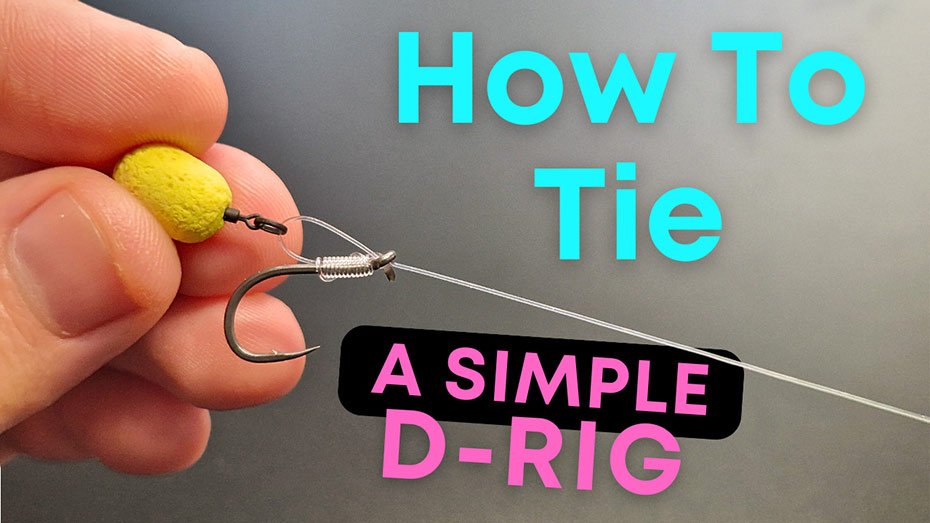It’s crucial to have the proper rig for carp fishing. A practical option that’s gaining popularity is the D Rig. In this guide, you will find step-by-step instructions on how to create a simple D-Rig.
Table of Contents
- Introduction
- Understanding the D-Rig
- Step 1: Choose the Right Hook
- Step 2: Prepare Your Line
- Step 3: Attach a Micro Ring Swivel
- Step 4: Finalize the Hook Setup
- Step 5: Creating the Figure of 8 Loop Knot
- Step 6: Wetting Your Knots
- Step 7: Using Bait Floss
- Step 8: Perfecting Your Bait Placement
- Step 9: Rig Testing and Adjustments
- Frequently Asked Questions
- Conclusion
Introduction
Carp fishing enthusiasts know that the proper rig can significantly impact their success on the water. This rig is a game-changer, and in this article, we’ll guide you through the process of creating a simple D-Rig. Whether you’re a beginner or an experienced angler, these steps will help you catch more carp effortlessly.
Understanding the D-Rig
Before diving into the rig-making process, it’s crucial to understand what the D Rig is and why it’s so effective. This rig is well-known for its capacity to replicate natural bait presentation and lure carp into biting.
Step 1: Choose the Right Hook
Start by selecting a hook with an out-turned eye. This design is perfect for the D Rig setup. The out-turned eye will allow your bait to sit at the perfect angle, increasing your chances of a successful hookup.
Step 2: Prepare Your Line
Take approximately 25cm (10 inches) of your chosen fishing line. The line’s strength and diameter will depend on your fishing conditions and the size of the carp you’re targeting.
Step 3: Attach a Micro Ring Swivel
Slide a micro ring swivel onto the tag end of your line. This swivel is essential as it provides flexibility for your bait presentation, ensuring it moves naturally in the water.
Step 4: Finalize the Hook Setup
Pass the tag end back through the eye of the hook. This process secures the hook in place and ensures that it doesn’t quickly come off during a fight.
Use a lighter to burn and blob the tag end. Be careful not to damage the line during this step. This melted blob will act as a stopper, preventing the hook from slipping off the line
Step 5: Creating the Figure of 8 Loop Knot
At the other end of the line, create a figure of 8 loop knot. This loop will serve as the attachment point for your rig to the mainline. Make sure it’s secure and doesn’t have any loose ends.
Step 6: Wetting Your Knots
Before tightening your knots, it’s important to wet them first. Wetting reduces friction and heat generated during tightening, which helps preserve the integrity of your line.
Step 7: Using Bait Floss
To attach your bait, use bait floss. A pop-up bait works wonderfully with the D-Rig configuration, sitting nicely on the bottom and attracting carp.
Step 8: Perfecting Your Bait Placement
The key to success with the D Rig is presenting your bait naturally. Ensure that the bait is perfectly positioned and balanced, so it mimics the carp’s natural food source.
Step 9: Rig Testing and Adjustments
Before casting your line, it’s essential to test your rig in the water, especially when using floating baits. Ensure that it behaves as you expect and makes the most of the D-Rig’s effectiveness.
Our Step-By-Step Simple D Rig Video Tutorial :
Frequently Asked Questions
- How long should my D Rig be for optimal performance?
The optimal length can vary depending on your fishing conditions and the size of the carp you’re targeting. However, the standard length for the hook link on a this rig is usually around 25cm (10 inches). This length allows your bait to move freely and appear natural in the water, which can increase your chances of a successful hookup.
2. Can I use a different knot to create the loop at the end of the line?
For a D-Rig loop, use a strong, secure knot that won’t slip during a carp fight. The figure of 8 loop knot is reliable and easy to tie.
3. What is the best bait for a D-Rig setup?
The best bait for this setup depends on the conditions and carp preferences. Pop-up baits work well, but it’s important to experiment with boilies, corn, or pellets for the most effective bait in your location..
4. How do I know if my D-Rig is working correctly in the water?
To ensure your rig is working correctly, it’s crucial to test it in the water before casting. Watch how your bait behaves. It should look natural and enticing to carp.
Conclusion
Creating a simple D Rig is an effective way to increase your carp-catching success. By following these steps you’ll be well on your way to becoming a skilled carp angler.
Remember that practice makes perfect, so keep going even if you don’t see immediate results. Happy fishing!
